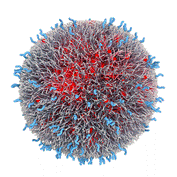Biotechnology, Center for
ORCID IDs
0000-0001-7090-3414
Date of this Version
2019
Document Type
Article
Citation
mBio 10:e02484-18.
Abstract
Small RNAs (sRNAs) remain an understudied class of regulatory molecules in bacteria in general and in Gram-positive bacteria in particular. In the major human pathogen Staphylococcus aureus, hundreds of sRNAs have been identified; however, only a few have been characterized in detail. In this study, we investigate the role of the sRNA Teg41 in S. aureus virulence. We demonstrate that Teg41, an sRNA divergently transcribed from the locus that encodes the cytolytic alpha phenolsoluble modulin (αPSM) peptides, plays a critical role in αPSM production. Overproduction of Teg41 leads to an increase in αPSM levels and a corresponding increase in hemolytic activity from S. aureus cells and cell-free culture supernatants. To identify regions of Teg41 important for its function, we performed an in silico RNA-RNA interaction analysis which predicted an interaction between the 3= end of Teg41 and the αPSM transcript. Deleting a 24-nucleotide region from the S. aureus genome, corresponding to the 3= end of Teg41, led to a 10-fold reduction in αPSM-dependent hemolytic activity and attenuation of virulence in a murine abscess model of infection. Restoration of hemolytic activity in the Teg41Δ3= strain was possible by expressing full-length Teg41 in trans. Restoration of hemolytic activity was also possible by expressing the 3= end of Teg41, suggesting that this region of Teg41 is necessary and sufficient for αPSMdependent hemolysis. Our results show that Teg41 is positively influencing αPSM production, demonstrating for the first time regulation of the αPSM peptides by an sRNA in S. aureus.


Comments
Copyright © 2019 Zapf et al.
Open access
https://doi.org/10.1128/mBio.02484-18